John Hurrell – 26 February, 2016
'Precarious Balance', as a title, of course references the Canterbury earthquake context, a Damoclesian tension of architectural instability that refuses to disappear, as the Valentine's Day tremor revealed. The heading has many other layers, including the physical positioning of many of the currently exhibited items, the much discussed global tensions resulting from uneven wealth distribution, the planet's eco/climate-crisis, and perhaps various social (community) predicaments alluded to in some works like that of Yass.
Christchurch
Sophie Bannan, Matt Calderwood, Sione Faletau, Claire Fontaine, Regan Gentry, Shaun Gladwell, Rob Hood, John Ward Knox, Joanna Langford, Richard Maloy, Zina Swanson, Catherine Yass, Peter Trevelyan, Abigail Reynolds, Erwin Wurm
Precarious Balance
Curated by Paula Orrell
12 February - 8 May 2016
In this exciting new iteration of CoCA, one that has moved well away from its arts society (and ‘working members’) origins towards a genuine centre of contemporary art, we see the first exhibition presented by its new director, Paula Orrell. It includes nine New Zealanders and six overseas guests.
And while it is true that in Christchurch ‘arts society origins’ and ‘centre of contemporary art’ were once one and the same, and that defining what precisely is ‘contemporary art’ is not easy, having a more focussed board, director, staff and venue is the cause of considerable celebration. With the recent reopening of Christchurch Art Gallery Te Puna o Waiwhetu, the continued presence of The Physics Room, and now this revamped (now non-collecting) organisation, local and visiting contemporary art lovers in Canterbury have an abundance of riches.
Precarious Balance, as a title, of course references the Canterbury earthquake context, a Damoclesian tension of architectural instability that refuses to disappear, as the Valentine’s Day tremor revealed. The heading has many other layers, including the physical positioning of many of the currently exhibited items, the much discussed global tensions resulting from uneven wealth distribution, the planet’s eco/climate-crisis, various social predicaments (such as hi-rise housing for the economically underprivileged) alluded to in some works like that of Yass, and perhaps (self-consciously) the fiscal sponsorship needed for sustaining the CoCA programme itself.
For Auckland-based punters like me, although I was familiar with the work (twice-over) of ‘international’ artists like Claire Fontaine (courtesy of Hou Hanru and Stephen Cleland) and Shaun Gladwell (courtesy of Trish Clark and Stephen Cleland), any possible disappointment was counterbalanced by the fact I had never seen the work of Peter Trevelyan or Zina Swanson before, and excellent examples of their practices are displayed in both CoCA and CAG. It says a lot about the insularity of the Auckland scene that they have never exhibited in that city.
Orrell and her team have created a satisfying synthesis of overseas artists and top New Zealand talent, teasing out the implications of the richly suggestive, multi-layered theme.
Catherine Yass‘s multi-screened installation on the ground floor presents films of a high wire walk between two Red Road apartment blocks in North Glasgow, two thirty-story towers (in a set of eight), built as an antidote to Glasgow’s tenement housing problems but demolished four years after this film was made. Yass shows Didier Pasquette advance to halfway along the taut wire and then (unhappy with the wind conditions) go into reverse, carefully going backwards to where he started. The buildings seem to be symbolic anchors for stable living conditions and successful community functionality, but take on another meaning after their demolition, as does Pasquette’s reversal.
Irish artist Matt Calderwood‘s three in-situ sculptures use ladders, shovels, buckets, sports gear and glassware to make cantilevered or suspended configurations, delicately balancing on the floor or jammed tightly between two walls or ‘anti-earthquake’ concrete pillars. Constructed using only his own body to place the elements in position, without assistants, these intricate, gravity-defying formations have no hidden nails, ropes or braces. Because he uses brand new items from hardware stores Calderwood’s craftily engineered assemblages have a strange beauty that goes beyond their self-proclaimed, self-sustaining logic of vectors and counter-stresses. It is hard to separate the laws of physics from bright colours, metallic sheens and moulded textures, they are so successfully interwoven.
John Ward Knox‘s sculpture - a tilted chair and its stabilising (now static) walking stick - makes a pair of items by reversing their energies and uniting their arabesqued common dark timber. Manifest and latent purposes are swapped over, to be sustained in balance only by pressure, gravity and friction - and forming an obviously temporary fifth leg. The work looks prone to immediate collapse; its vulnerability is extremely unsettling.
With Erwin Wurm‘s One Minute Sculptures human bodies become armatures or flying buttresses, holding locally purchased, cleaning product bottles and brushes in place to comic effect - horizontally sandwiched between gallery visitors standing on a plinth. The plinth has a small drawing by the artist on a corner, so participants can look closely and get the details right. While the work is obviously funny in its ridiculous character, it is also relational in the sense that two strangers can be persuaded to create the sculpture, and then perhaps later, have a private conversation. It serves as an ‘introduction’, an aid for potential fraternisation.
The large meandering wall of taped cardboard cartons by Richard Maloy plays on the artist devising ways for the cardboard to stay upright, to support its own weight. A cross between a building shell and a boat, Maloy’s partially painted yellow structure uses thin columns and low tables to keep the teetering elements in place, to push their physical properties to extremes. He transmutes scruffy cardboard boxes into temporary walls and floors.
‘Teetering’ is what Shaun Gladwell and his skateboard also does in his video, skirting the edge of a concrete path that borders sea and rocks below. He swings, loops and swivels around attempting to control his movements with precision - while taking daring risks. Like Pasquette, he’s a show off, but we can’t turn away.
English artist, Abigail Reynolds‘ collage of the old British Museum National Library, explores history on a fixed site, teasing out the same location using identically sized, overlaid folded documentary photographs on printed pages from old books. Her other image, of Brimham Rocks in North Yorkshire, with sludgy and blobby, oil based ink, seems to allude to Christchurch’s ubiquitous liquefaction. However the digital delicacy of the linear screen patterns denies that - its fineness an unanticipated celebration of the Brimham molecular geology.
Sophie Bannan examines the relationship between architecture and pottery by making a suite of eighteen pots out of the crushed earthquake demolition detritus of eighteen well known Christchurch buildings. Positioning these in a row on a shelf, she layers this further by filming the ghostly remnants of the Christchurch Town Hall and interviewing one of its architects, Maurice Mahoney, about its construction and planned rebuilding. On the wall is a suite of beautiful black and white photographs of Mahoney’s own pots.
Regan Gentry‘s collage of a coloured table mat with two identical beer coasters, exploits the fact that these three tourist items photographically feature the now earthquake-destroyed Christchurch Cathedral. As two circles in a rectangle, symmetrically arranged, they document the building from the same north-western angle. The spire viewed through binoculars, a metaphor for the passing of time perhaps, a ruin soon to become an ancient memory?
Robert Hood‘s pile of propped up, crumpled car window-screens surprises because the extracted curved planes seem bigger than when encountered in a vehicle, much being hidden behind the dashboard. Tinted blue to screen out the sun, they look as if they come from camper vans. Here they become a new landscape, an unanticipated rock formation.
Peter Trevelyan‘s large geodesic sphere, made of foot-long, clear plastic rulers, has partially collapsed so that its bottom quarter has subsided - while the rest above it remains vertical. It looks amusing with its caved-in, prolapsed bottom that could almost be swallowed up by the ground. A symbol for the deteriorating planet, perhaps?
Though at first glance it looks like stacked up slate, Joanna Langford‘s sculpture is made of flaked cement, alluding to the earthquake’s rubble. There are seven piles and three are hovering in the air. With each tower there is a protruding rightangled stick of bamboo painted with red bars. They look like floating lines within a drawing and are unnerving in their delicate graphic impact. They compact the CoCA space, reducing it to two dimensions.
What appears at first glance to be a descending chain from the roof - for Zina Swanson - is actually a vertical line of interconnected hooks. Maintained by gravity so they reach a doormat in which is growing a couple of blades of grass. Nearby on the floor is a rock with a metal plug set in it, holding a pressed flat sprig of clover, and on the wall, a drawing of a hand covered with small circles, in each of which is a pair of crossed eyelashes. Swanson is clearly drawn to the lightest and most ethereal of materials, wispy objects that defy gravity.
Sione Faletau‘s video presents himself and two muscular brothers mimicking the structure of an ancient monument in Tonga, the Ha’amonga ‘a Maui, a massive stone lintel of mysterious origin. The two larger siblings use their brawn to support the weight of the third, their actions seemingly to symbolise the common village people patiently supporting the indulged aristocratic classes. The image is in three parts, with the fleshy monument flanked by identical pyramids of patterned tapa cloth hiding human forms. From these we can hear the ominous drumming of discontent.
The Te Reo text (Kei nga wāhi katoa a tauiwi) made into neon words by the radical Parisian collective, Claire Fontaine, is designed to be read from the Gloucester St window frontage, and is highly precarious in the odd balancing of its interpretative possibilities. On one hand it can be perceived as fearfully xenophobic when it is translated as ‘White Sails Everywhere’ or ‘Foreigners Everywhere.’ On the other it challenges the notion of racial exclusivity if it is worded in English as ‘We Are All Foreigners.’ The meaning oscillates between two poles, so that the reader is never quite comfortable about the speaker’s intentions.
It is an excellent show that Orrell and the CoCA board has pushed through, for sure. It is exciting to see such quality overseas contributiors mixing with locals. My only quibble is a small thing, that there needs to be a handout for visitors; you can’t rely on a website to be read on smartphones. That is simply not enough.
My view is that it is essential that on arrival punters get given a piece of paper with a list of works on it, along with materials used, and a brief discussion of every item. Then after their exploration the visitor can go home, relax in their favourite chair with their favourite drink, look at it and ruminate about their CoCA experience.
They can read the curatorial spiel on that sheet, form an attitude towards the gallery pitch, perhaps kick themselves over what they’ve missed, and with luck they’ll return in a fortnight for a more considered examination. They’ll be engaged because that typed page is a palpable object brought into their home, and it will remind them to visit again. When they do, it will help them make cross connections and wider interpretations, exploring the space with more vigour - and they will become loyal regulars. It’s a cinch.
John Hurrell
Recent Comments
Andrew Paul Wood
Bartley & Company showed Peter Trevelyan at the Auckland Art Fair in 2013. Zina Swanson was in the 2003 show ...
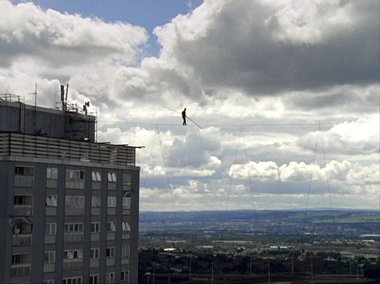



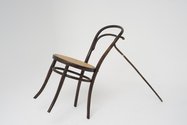


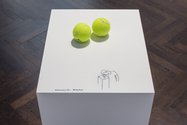
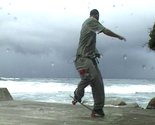

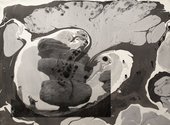
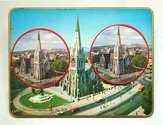
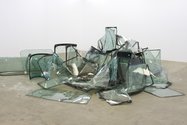
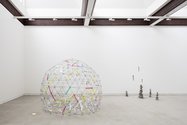
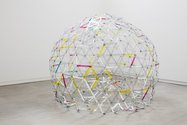

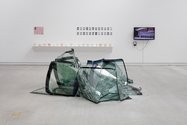




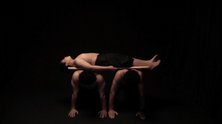
 Two Rooms presents a program of residencies and projects
Two Rooms presents a program of residencies and projects Advertising in this column
Advertising in this column



This Discussion has 1 comment.
Comment
Andrew Paul Wood, 5:48 p.m. 27 February, 2016 #
Bartley & Company showed Peter Trevelyan at the Auckland Art Fair in 2013. Zina Swanson was in the 2003 show Follow the White Rabbit at Artspace.
Participate
Register to Participate.
Sign in
Sign in to an existing account.